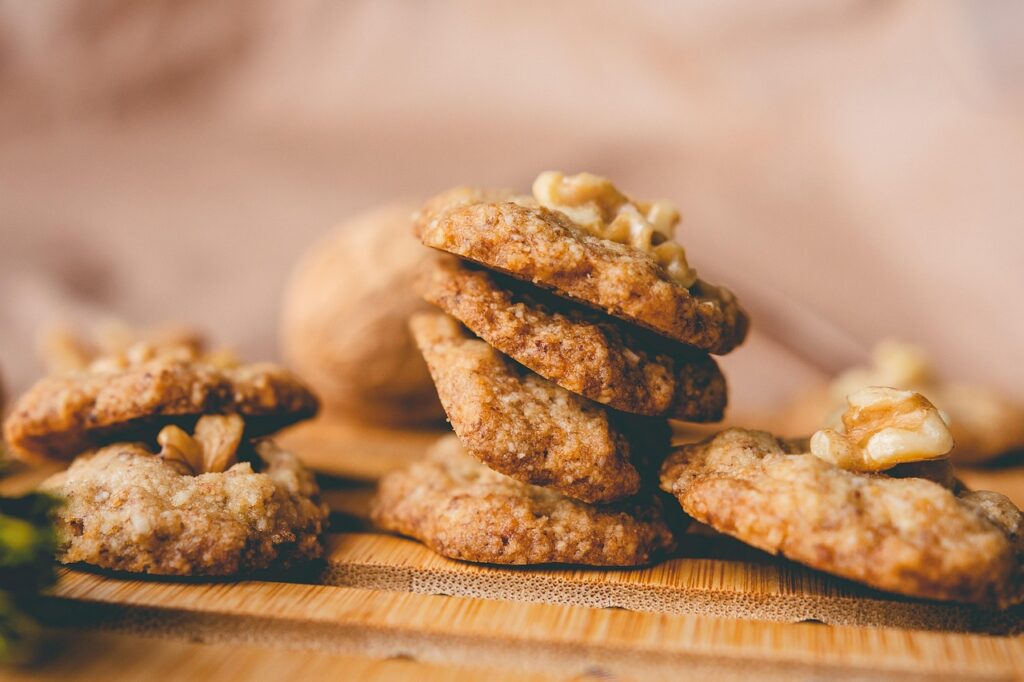- Why Soft Food Is a Win for Older Dogs
- Why Soft Food is a Game-Changer for Older Dogs
- 1. It’s Easy on Their Teeth
- 2. It’s Kinder on Their Tummy
- 3. It Smells (and Tastes) Way Better to Them
- 4. It Keeps Them Better Hydrated
- 5. It’s Great for Joints and Mobility
- 6. It’s Packed with Age-Smart Nutrients
- 7. It’s Perfect for Mixing in Medications
- 8. It Can Help Manage Their Weight
- Final Thoughts: A Small Change with Big Benefits
- What to Look for in Soft Food for Seniors
- Our Favorite Soft Foods for Older Dogs
- Can I Just Soften Their Kibble?
- Feeding Tips for Older Dogs
- When to Call the Vet
- Final Thoughts
Today, we explain to you about the best soft food for older dogs. As our dogs get older, their needs start to change—and one of the first places we often see it is at mealtime. Maybe your once-enthusiastic eater suddenly turns their nose up at kibble. Or maybe they’re chewing slower, dropping food, or just seem… less excited about dinner.
That’s totally normal. Just like people, dogs can develop dental issues, sensitive stomachs, or changes in appetite as they age. The good news? Soft dog food can make a huge difference—and help your senior pup feel good inside and out.
Let’s walk through why soft food can be so helpful, what to look for, and some of the best options out there right now.
Why Soft Food Is a Win for Older Dogs
Once your dog hits their senior years (usually around age 7 or older, depending on breed), their body goes through some natural changes. These can include:
- Trouble chewing hard food due to dental wear or missing teeth
- Less interest in food due to a weaker sense of smell or taste
- More sensitive stomachs or digestion issues
- Slower metabolism, which means they don’t need as many calories
- Joint pain or arthritis that makes standing to eat harder
Soft food is easier to chew, often more flavorful, and can be packed with ingredients that support joint health, digestion, and hydration. Win-win-win.
Why Soft Food is a Game-Changer for Older Dogs
If your dog is starting to slow down a bit, eat less eagerly, or seem a little more sensitive around mealtimes, you’re not alone—and it might be time to think about switching up their food. As our pups get older, their needs change, and one simple way to support their health and happiness is by offering them soft food.
Let’s walk through why soft food is so great for senior dogs, and how it can help them stay comfortable, nourished, and excited for dinner again.
1. It’s Easy on Their Teeth
Just like humans, dogs can have dental issues as they age—think missing teeth, sore gums, or even jaw pain. Chewing crunchy kibble can be tough for them. That’s where soft food really shines.
It’s gentle to chew, easy to swallow, and won’t make them struggle or feel uncomfortable while eating.
2. It’s Kinder on Their Tummy
Older dogs can have more sensitive digestion. Some may deal with gas, bloating, or upset stomachs from certain foods. Soft food tends to be:
- Easier to digest
- Made with simpler, gentler ingredients
- Packed with nutrients that support gut health
Think of it like comfort food—but still super healthy!
3. It Smells (and Tastes) Way Better to Them
As dogs get older, their sense of smell and taste isn’t as sharp. This can make them less excited about their food.
Soft food usually smells stronger and has a richer taste than dry kibble, which can help entice picky eaters or dogs who’ve lost interest in mealtime. One whiff of a warm, meaty stew and suddenly—your dog is back to licking the bowl clean.
4. It Keeps Them Better Hydrated
Hydration is super important, especially for senior dogs. But some older pups just don’t drink enough water.
The great thing about soft food is that it contains lots of moisture—some up to 75% water. That extra hydration helps support:
- Kidney function
- Urinary health
- Energy and overall well-being
It’s like a meal and a drink in one!
5. It’s Great for Joints and Mobility
Many senior dogs deal with joint stiffness, arthritis, or trouble getting around. The right soft food often includes:
- Glucosamine and chondroitin (to support joint health)
- Omega-3 fatty acids (to help reduce inflammation)
- Antioxidants (to protect the joints from further damage)
These ingredients work quietly behind the scenes to help your dog stay active and mobile.
6. It’s Packed with Age-Smart Nutrients
Senior-friendly soft foods usually have some bonus ingredients tailored just for older pups, like:
- DHA and B vitamins for brain health
- Taurine and L-carnitine for heart support
- Antioxidants for immune health
These help your dog stay sharp, strong, and healthy inside and out—no matter their age.
7. It’s Perfect for Mixing in Medications
If you’ve ever had to sneak a pill into your dog’s food, you know it’s not always easy. But with soft food? It’s a breeze.
You can hide tablets, mix in liquid meds, or stir in supplements—and your dog will probably still think it’s just a tasty treat. No drama at dinner time!
8. It Can Help Manage Their Weight
Senior dogs might slow down, which means they don’t burn as many calories. Or they might lose weight due to health issues or appetite changes.
The beauty of soft food is that you can:
- Choose a lower-calorie formula if they need to shed a few pounds
- Pick a protein-rich option if they need to gain or maintain weight
- Easily adjust portions because it’s super scoopable and mixable
You’re in full control, and your dog gets just what they need.

Final Thoughts: A Small Change with Big Benefits
Switching to soft food might seem like a small change, but it can make a huge difference in your dog’s comfort, health, and happiness.
Whether your pup is dealing with dental issues, picky eating, or just needs a little extra TLC in their golden years, soft food is a simple, loving way to help them feel their best. They’ve been your loyal buddy for so long—this is just one way to give that love right back.
Want help picking the perfect soft food for your dog’s age, size, or health needs? Just let me know—I’d be happy to help you choose the right fit! 🐕💛
What to Look for in Soft Food for Seniors
Before you grab just any can or pouch, here’s what you want to look for in high-quality soft food:
- Real protein as the first ingredient (like chicken, beef, or salmon)
- Joint-supporting nutrients like glucosamine and chondroitin
- Easily digestible ingredients like brown rice, pumpkin, or sweet potato
- Lower fat and moderate calories to avoid unnecessary weight gain
- Moisture-rich to help with hydration, especially if your pup drinks less
And of course—something your dog actually wants to eat!
Our Favorite Soft Foods for Older Dogs
Here are some top picks that dog parents and vets love:
1. Hill’s Science Diet Adult 7+ Savory Stew
- Great for: Gentle digestion and overall health
- Features: Real meat chunks in gravy, plus veggies
- Why we love it: Specifically made for older dogs, vet-recommended, and super tasty!
2. Blue Buffalo Homestyle Recipe Senior Chicken Dinner
- Great for: Natural nutrition and joint health
- Features: No by-products or artificial stuff, includes glucosamine
- Why we love it: Clean ingredients and good for picky eaters
3. Nutro Ultra Senior Pâté
- Great for: Dogs that love soft, creamy textures
- Features: A mix of lean meats like chicken, lamb, and salmon
- Why we love it: Packed with nutrients and smells delicious (to dogs, anyway!)
4. Royal Canin Aging 12+ Loaf in Sauce
- Great for: Very senior dogs (12 years and up)
- Features: Soft texture, balanced for older bodies
- Why we love it: Designed for aging needs and very gentle on the tummy
5. Wellness Complete Health Senior Wet Dog Food
- Great for: Full-body wellness
- Features: Includes sweet potato, carrots, and flaxseed
- Why we love it: Supports heart health, digestion, and coat health
6. Cesar Senior 10+ Wet Dog Food (Chicken & Rice)
- Great for: Smaller breeds or light eaters
- Features: Soft, portioned trays with a smooth texture
- Why we love it: Super convenient and ideal for picky pups
Can I Just Soften Their Kibble?
Absolutely! If you’re not ready to switch fully to wet food, you can soften your dog’s dry food by:
- Adding warm water
- Mixing in a bit of low-sodium chicken broth
- Combining it with a spoonful of wet food
Let it sit for 10–15 minutes so it becomes easier to chew and more appealing in both smell and taste.
Feeding Tips for Older Dogs
Here are a few bonus tips to make mealtime smoother for your senior buddy:
- Stick to a schedule. Dogs love routine.
- Try smaller, more frequent meals if big meals upset their tummy.
- Encourage drinking or serve wet food to boost hydration.
- Keep an eye on dental health—a vet checkup can help spot hidden issues.
- Watch their weight. Sudden loss or gain? Time for a vet visit.
When to Call the Vet
If your dog suddenly stops eating, seems to struggle while chewing, loses weight quickly, or acts unusually tired or restless, don’t wait. These can be signs of dental pain, illness, or other medical issues that need attention.
Final Thoughts
Switching to soft food is more than just a treat—it can be a thoughtful, loving way to help your dog feel better, eat easier, and stay healthy as they age. Whether you go full wet food or just soften their kibble a bit, the key is paying attention to what makes your pup happy and comfortable.
Because let’s be real—our senior dogs have given us years of loyalty and love. They deserve the best in every bowl. 💛🐾




